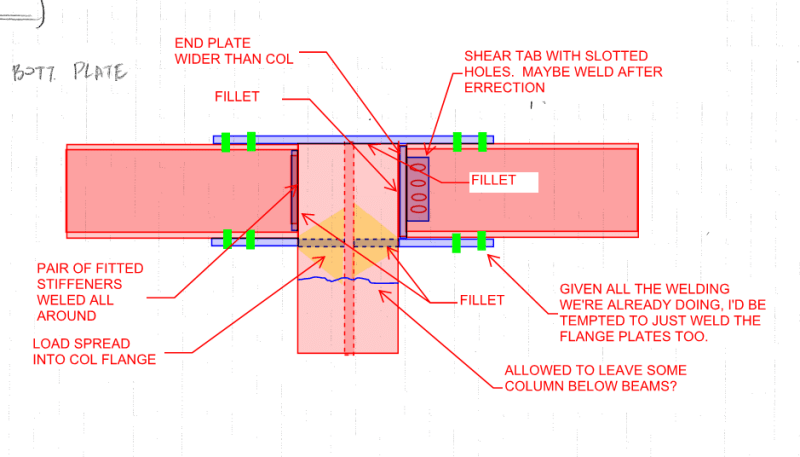canwesteng
Structural
I have an existing beam connected to a column web, that I'm looking to make continuous for moment at the joint to another beam of the same size on the opposite end of the column, with the goal of chopping the column. Current plan - install a a beam seat, remove existing clips, weld a shear tab to existing beam and column, and then weld on the new beam. What if I left the clips on, used bolted flange plates, and then am left with clip angles in the splice? The flexibiliy concerns me. Sketch attached


